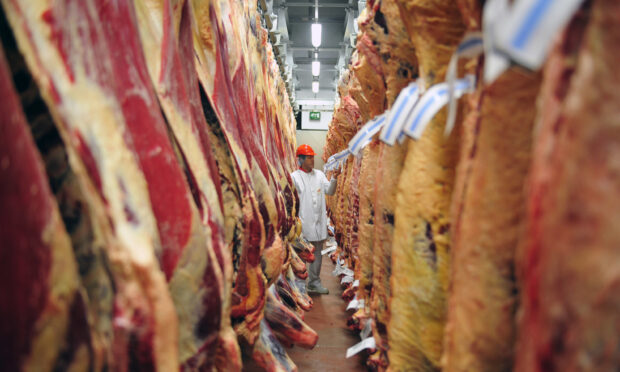Scotland’s £674 million flagship beef industry is assessing the potential cost and reputational implications of a single case of BSE.
At a stroke, an infected animal in Aberdeenshire wiped out the country’s prized negligible risk (NR) status which was granted by the World Organisation for Animal Health just 18 months ago after a decade during which no cases of the disease were reported.
No new export markets for Scottish beef were secured as a direct result of the improved status, however figures quoted when Scotland gained NR suggested there would be a £10 gain for every Scottish beef animal processed under the new Specified Risk Material (SRM) regime.
On that basis, it can be assumed that costs will now rise by £10 per head, and on a total kill of 500,000 animals it could mean a financial impact of as much as £5 million a year which may be passed on to farmers.
The Scottish Association of Meat Wholesalers said the immediate implications for abattoirs are that as from yesterday the vertebral column, tonsils, mesentery fat, caecum (part of the large intestine) and the last four metres of the small intestine will become SRM and require to be consigned for rendering and incinerated at a cost to processors.
For the past 18 months these products have been mainly used for pet food or for fifth-quarter exports to a variety of markets in Asia.
The full consequences for beef exports will not be known for some time, but Quality Meat Scotland (QMS) chief executive Alan Clarke said the change in status from NR to controlled risk (CR) was not expected to have any significant impact on trade.
He added: “These companies understand what sets Scotland’s beef apart from the rest of world and the generations of farmers who have worked hard to produce a top-quality product which is quality assured and benefits from Protected Geographical Indication status.”
A Scottish Government spokesman said: “The Scottish red meat industry has a global reputation for the quality of its produce and although it is a blow to lose our BSE negligible status, we do not anticipate this having an effect on our present exports.
“We will continue to work closely with countries such as China on exports of our highly acclaimed beef.”
Meanwhile, ongoing UK Government negotiations to resume beef exports with the United States should not be affected as Scotland has simply returned to the same status as the rest of Britain.
QMS states that Scottish beef exports for 2017 were estimated at £39m in value and 7,100 tonnes in volume, with a further 4,300 tonnes of beef offal generating nearly £9m of revenue.
nnicolson@thecourier.co.uk










